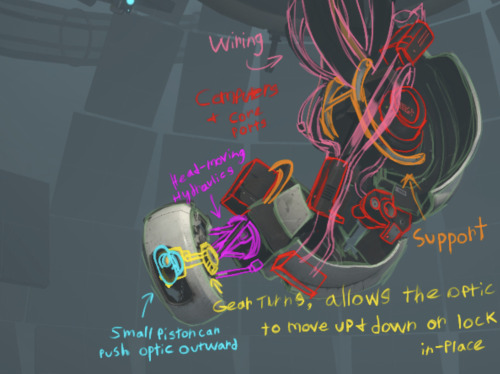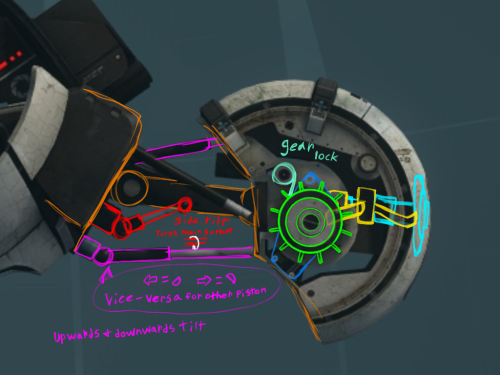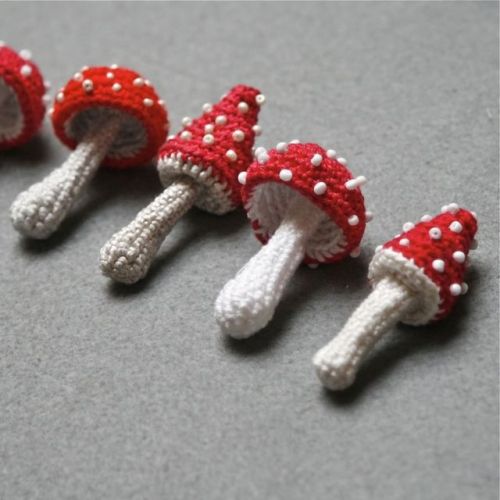#cool stuff
Reading back through some of my favorite older myths, there are a lot of the “King in the Mountain” tropes where a great hero of yore doesn’t actually die, they just go chill somewhere until their given countries “time of need”. So like..the apocalypse is going to be pretty epic if any of these are true.
i got bored and did a color-coded ref for GLaDOS buuut then it turned into plotting hc schematics lmao–
Post link
If we can farm metal from plants, what else can we learn from life on Earth? | James Bridle
For the past couple of years, I’ve been working with researchers in northern Greece who are farming metal. In a remote, beautiful field, high in the Pindus mountains in Epirus, they are experimenting with a trio of shrubs known to scientists as “hyperaccumulators”: plants which have evolved the capacity to thrive in naturally metal-rich soils that are toxic to most other kinds of life. They do this by drawing the metal out of the ground and storing it in their leaves and stems, where it can be harvested like any other crop. As well as providing a source for rare metals – in this case nickel, although hyperaccumulators have been found for zinc, aluminium, cadmium and many other metals, including gold – these plants actively benefit the earth by remediating the soil, making it suitable for growing other crops, and by sequestering carbon in their roots. One day, they might supplant more destructive and polluting forms of mining.
The three plants being tested in Greece – part of a network of research plots across Europe – are endemic to the region. Alyssum murale, which grows in low bushes topped by bunches of yellow flowers, is native to Albania and northern Greece; Leptoplax emarginata – taller and spindlier, with clusters of green leaves and white petals – is found only in Greece; and Bornmuellera tymphaea, the most efficient of the three, which straggles across the ground in a dense layer of white blossom, is found only on the slopes of the Pindus (its name comes from Mount Tymfi, one of the highest peaks of the range).
What I have come to understand about these plants is that, by virtue of their evolutionary history and their close association with the soil, climate and wider ecosystem in which they have emerged, they embody a certain kind of knowledge: an understanding and accommodation with the places they have found themselves in. Humans have sought out deposits of rare metals for thousands of years, and developed ever-more violent ways of accessing them, but these plants have been around far longer, and have found more equitable and regenerative ways of doing much the same thing. Perhaps we have something to learn from them.
Hyperaccumulators are far from being the only non-humans that we might learn from, as scientific research in recent decades has shown us. Take slime moulds: strange, unicellular creatures somewhere between fungi and amoebae, which turn out to be very good at solving some very hard mathematical problems. Researchers at Lanzhou University in China have shown that Physarum polycephalum, a particularly lively slime mould, can solve the “travelling salesman” problem – a test for finding the shortest route between multiple cities – faster and more efficiently than any supercomputer humans have devised.
Cows, sheep, dogs and other animals have been shown to predict earthquakes in advance of tremors which register on seismographs. Squids and octopuses, we have learned, spread their neurons out through their bodies in ways that allow their limbs, and perhaps other faculties, to act independently of a centrally controlling mind. Spiders store information in their webs, using them as a kind of extended cognition: a mind outside the body entirely. A new conception of intelligence is emerging from scientific research: rather than human intelligence being unique or the peak of some graduated curve, there appear to be many different kinds of intelligence with their own strengths, competencies and suitabilities.
We’re also discovering all kinds of abilities which suggest whole worlds of being and awareness among non-humans we were previously unaware of. Plants, it turns out, hear and remember. In one experiment, they demonstrated the ability to respond with chemical defences to the particular sound of caterpillars munching on their leaves, even when it came from a tape recorder. In another, mimosa plants – which curl their leaves up when disturbed – learned to ignore being dropped a short distance when it proved harmless, and to react in the same way when tested days or weeks later, having in some way internalised this experience. Meanwhile, beneath the forest floor, we have become privy to the commerce and conversations of trees as they trade nutrients and information between families and species through the networks of fungi which connect their roots, in ways we are only just beginning to understand. These, too, are kinds of intelligence: and among other things, they are the way other species have learned to survive life-threatening events.
In the struggle to mitigate and adapt to climate breakdown – and all the other entangled crises we face – we are starting to recognise that other ways of knowing and acting on the world, from indigenous knowledge systems to changes in our own consumption and patterns of life, are vital to surviving and thriving on a hotter, wetter and more conflicted planet. We know too that this survival is dependent not only on our own abilities and inventions, but on the survival of the other species we share the planet with. The collapse of biodiversity which is already occurring makes it harder for us to hold back the collapse of whole ecosystems on which we too depend: for the pollination of crops, for disease resistance, for safe and sufficient food, for protection from fires and other natural disasters. We will flourish together, or not at all.
The deep knowledge that is possessed by animals, plants and others – their intelligence, we should begin to say – is another reason why we must preserve and protect them. But more than this: we should be listening to them, learning from them and working with them. The hyperaccumulator plants, for example, show us there are other ways of getting what we need from the planet; they also remind us that there are limits to what we should extract, as to turn them into another agroindustrial resource like soya beans or palm oil would be just as damaging. The knowledge that there are other ways of being intelligent on this planet should force us to reassess the centrality and usefulness of our own. Other worlds are not only possible, they have been growing around us all along.
I was getting pretty fed up with links and generators with very general and overused weapons and superpowers and what have you for characters so:
Here is a page for premodern weapons, broken down into a ton of subcategories, with the weapon’s region of origin.
Here is a page of medieval weapons.
Here is a page of just about every conceived superpower.
Here is a page for legendary creatures and their regions of origin.
Here are some gemstones.
Here is a bunch of Greek legends, including monsters, gods, nymphs, heroes, and so on.
Here is a website with a ton of (legally attained, don’t worry) information about the black market.
Here is a website with information about forensic science and cases of death. Discretion advised.
Here is every religion in the world.
Here is every language in the world.
Here are methods of torture. Discretion advised.
Here are descriptions of the various methods used for the death penalty. Discretion advised.
Here are poisonous plants.
Here are plants in general.
Feel free to add more to this!
An exceedingly useful list of lists for writers.
you know how Fred and George created a swamp (I think it was) and the teachers were just so impressed with the magic and creativity that they left it there
I feel like some students in the past played a prank where the staircases moved and the teachers were just like “oh wow, that’s impressive, let’s keep it”


























